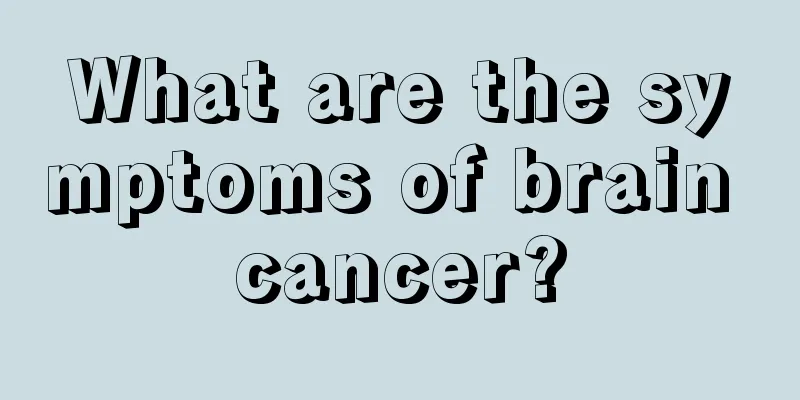What are the symptoms of brain cancer?

|
It is generally believed that "headache, vomiting, and papilledema" are the three main symptoms of brain tumors. We remind everyone that if any of the following symptoms occur, you should try to rule out the possibility of a brain tumor: 1. Chronic progressive headache. Brain tumors are intermittent in the early stages, with throbbing pain and distending pain, which mostly occur at night or early in the morning, and often wake the patient up from sleep. Each attack lasts for several minutes or hours. As the tumor continues to grow, the pain intensifies and gradually turns into a persistent one. Any activity that can increase intracranial pressure, such as exertion, excitement, coughing, sneezing, vomiting, and straining to defecate, will aggravate the headache symptoms. Changing body position will also affect the severity of headaches. For example, when standing, brain pressure can be relatively reduced, and pain is relieved; when lying, brain pressure is relatively increased, and pain is aggravated. 2. Severe headaches are accompanied by nausea and vomiting, and the headache will be relieved in a short period of time after vomiting. 3. Non-ophthalmological diseases such as decreased vision, diplopia, strabismus, visual field (vision range) defect or unilateral eyeball protrusion. Hemianopsia, one eye can see things, but the other side cannot. When the tumor directly compresses the optic nerve, not only will the vision suddenly decrease, but also blindness may occur. This is also an early symptom of brain tumor. 4. Patients who have had malignant tumors in other parts of the body and gradually develop headaches, vomiting, or hemiplegia, such as brain metastasis of lung cancer or choriocarcinoma. Brain tumors are divided into benign and malignant, and they are distributed throughout the skull, so the symptoms they cause are also varied. The most common symptoms are dizziness, headache, limb numbness and weakness, speech dysfunction, etc. Some people also experience epilepsy and cognitive dysfunction, and some people even directly lead to coma symptoms. Intracranial tumors grow in different locations and are very strange. The most clear way is to do a head CT and head MRI, which can clarify the nature of 80% of intracranial tumors. At present, surgical resection is still the main treatment for brain tumors. In this way, based on the postoperative pathological changes, it is decided whether to conduct further radiotherapy or chemotherapy. |
>>: How to care for bladder cancer patients after surgery
Recommend
Why does beef turn green?
As we all know, normal beef should be bright red,...
7 things that can cause your body to smell bad
Regular bathing and personal care can help preven...
How to wear a swimsuit
With the continuous improvement of modernization,...
What are the common causes of ovarian tumors
Ovarian malignant tumors do trouble many women in...
Dietary regimen for glioma patients
No matter what disease is being treated, diet oft...
Reasons why the car air conditioner does not cool
With the arrival of summer, the weather is gettin...
What are the examination items for cervical cancer? What should be paid attention to before the examination?
Cervical cancer screening items include human pap...
Sharp and wet scrotum
Many men will feel scrotal pain. A careful observ...
What is severe aplastic anemia and what are its symptoms?
Severe aplastic anemia is a disease that we often...
Is numbness in the hands due to cervical spondylosis considered serious?
Cervical spondylosis is a common human bone disea...
What are the genetic factors for uterine cancer
The emergence of cancer is still a mystery that h...
Why are blue veins blue?
In daily life, when summer comes, everyone wears ...
What to do if you lose swallowing function due to nasopharyngeal cancer
What should I do if I lose my swallowing function...
How to have a plastic surgery on the mouth
With the rapid development of the times in recent...
What are the effects of chrysanthemum?
Colorful chrysanthemum can be used to make tea, a...









